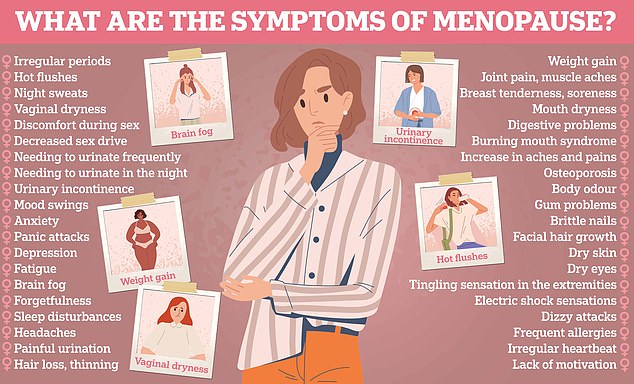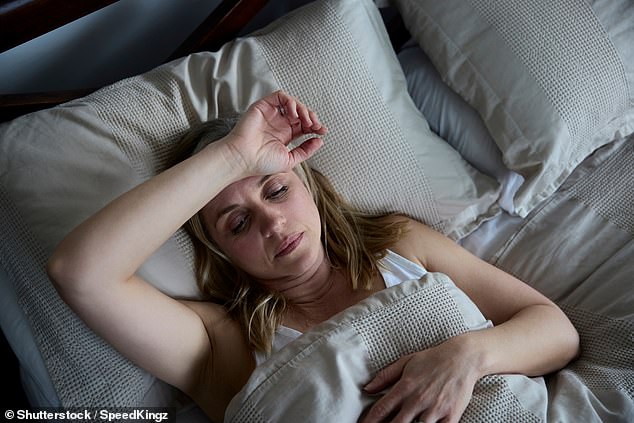Long-term illnesses are driving a staggering eight million Britons – one in five working-age adults – out of the workforce, a report shows.
While 4.3 million people with health problems do not work at all, 3.9 million do but have a condition that affects their ability to remain in full-time employment.
The number of Britons too sick to work has risen by 37 per cent in the last decade, from around 6 million, according to new figures from the Healthier Working Life Commission.
The growing toll of obesity and its related conditions, mental health problems and the after-effects of the Covid pandemic are believed to be behind this increase.
Britain’s obesity crisis and deteriorating mental health are thought to be driving the rise (file image)

Since 2013, the number of people saying they are unwell for work has increased by 37 per cent, with numbers rising from 6 million to 8.2 million (file image)
About 300,000 people with health problems leave the labor market each year, The Telegraph reports.
He adds that the Healthier Working Life Commission has called for a reform of sickness benefits to help better support the gradual return to work.
However, delays in accessing healthcare could be making the problem worse, with one in three unemployed people of working age also on the NHS waiting list.
The report also revealed that the menopause is adding to Britain’s sick leave culture, with 60,000 women out of work with long-term symptoms.
These absences cost the economy £1.5bn a year, an analysis by the NHS Confederation, which represents healthcare organisations, estimated.

In the UK, 750,000 women are on NHS waiting lists for gynecology services, and 83 per cent of those with chronic illnesses say they have difficulty working (file image).

The report found that women suffering from severe mental or physical symptoms are less likely to be employed compared to the rest of the population, and twice as likely to be economically inactive due to health problems.
Menopause usually occurs between the ages of 45 and 55, when the ovaries stop producing estrogen, which causes periods to stop and can lead to hot flashes and insomnia.
Around 4.5 million women in the UK are menopausal.
Researchers further found that absenteeism from work due to heavy and painful periods, endometriosis, fibroids and ovarian cysts costs the UK economy £11 billion a year.
It argued that every additional £1 invested in obstetrics and gynecology services to speed up access to care will result in a return on investment of £11.
In the UK, 750,000 women are on NHS waiting lists for gynecology services, and 83 per cent of those with long-term conditions say they have difficulty working.
There are a near-record 2.6 million people out of work in the UK due to long-term illness, and absence rates are higher among women than men.
The report, which included analysis by consultancy London Economics, makes a series of policy recommendations including increasing funding for research into women’s health conditions and improving the education of doctors.
Dr Layla McCay, policy director at the NHS Confederation, said: “This report highlights the urgent need for sustainable funding to support the Ten Year Women’s Health Strategy for England and women’s health more broadly.”
‘The findings demonstrate that investing in women’s health services is not simply a matter of improving health outcomes; There is also an economic imperative that has far-reaching benefits across our society.
‘Investment in women’s health services can generate an estimated return of £11 for every additional £1 spent per woman in England, demonstrating the economic viability of such a commitment.
‘By addressing women’s health more effectively, we can alleviate substantial economic burdens, such as absenteeism and lost productivity… benefiting businesses and the economy as a whole.
‘Most importantly, these measures would help ensure that all women receive the support they deserve when facing health problems.
“Now is the time to take decisive action and we urge the government to include these critical measures in its 10-year health plan.”
It comes as a separate interim report from the Healthier Working Life Commission found that an average of 300,000 people a year have left the workforce in poor health over the past decade.
The study calls for early support for workers with health problems to stay or return to work amid a growing benefit bill.

The report found that women suffering from severe mental or physical symptoms are less likely to be employed compared to the rest of the population (file image)

Menopause is adding to Britain’s sick leave culture: 60,000 women are off work with long-term symptoms, report reveals (file image)
On average, between 2014 and 2023, only 3.6 percent of economically inactive people ages 16 to 64 with work-limiting health conditions gained employment each year.
This is almost three times lower than the rate of those without long-term health problems (9.5 percent).
People with work-limiting conditions are also three times more likely to move from employment to inactivity compared to those without long-term health conditions, according to the Commission, set up by the Health Foundation think tank.
Sacha Romanovitch, chair of the Healthier Working Life Commission, said: “When people have secure and fulfilling work, they can support their families and contribute to society, which in turn benefits their health.
‘If we intervene early and provide the right support, people can stay in work longer. That is a fantastic goal for people, for companies and for society.”


